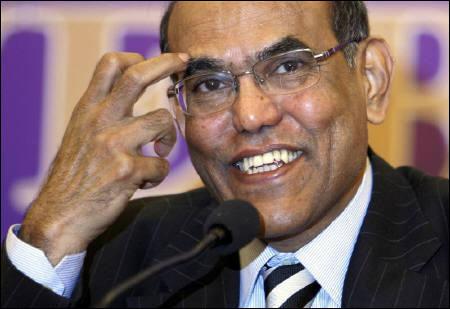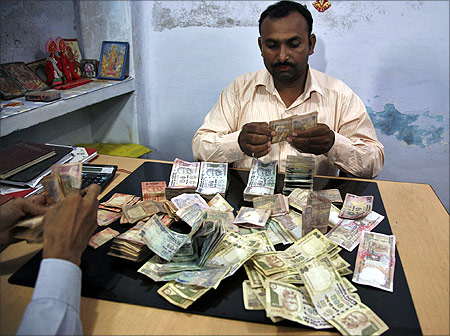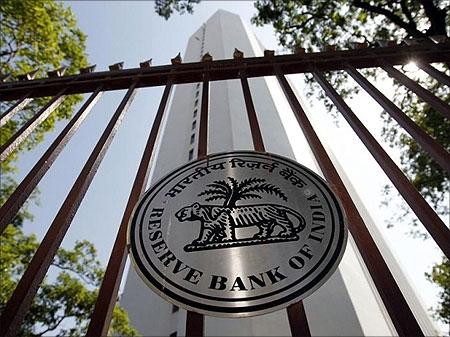 | « Back to article | Print this article |
RBI cuts rate but loans won't be cheaper right away
The more things change, the more they remain the same.
This adage seems to explain the state of India's banking sector.
The Reserve Bank of India's aggressive cut in repo rate is unlikely to impact the fortunes of the sector.
Over the last few quarters, Indian banks have seen growth coming off and bad loans rising, due to high rates and policy issues.
Click NEXT to read further. . .
RBI cuts rate but loans won't be cheaper right away
The market has been building in hopes of a rate cut since last year, as it would trigger growth and ease asset quality issues.
So, will RBI's 50-basis-point cut in repo rate change the fortunes of the sector? Not really, claim analysts.
RBI has cut rates, but lending rates are unlikely to come down in a meaningful way just yet.
Over the last week, several banks have cut rates by 25 basis points, clearly not enough to fuel credit demand.
Click NEXT to read further. . .
RBI cuts rate but loans won't be cheaper right away
Also, with the stream of private investments petering off in an uncertain environment, demand for credit is expected to be relatively weak.
This will result in competitive pressures increasing in retail lending segments like mortgage, and banks will start offering competitive rates to borrowers.
This will evidently put pressure on margins.
Morgan Stanley says: "RBI is forecasting deposit growth of 16 per cent in FY13 and loan growth of 17 per cent -- implying it expects loan-deposit ratio at 78 per cent by end of FY13.
Click NEXT to read further. . .
RBI cuts rate but loans won't be cheaper right away
"This will prevent banks from cutting rates aggressively.
"Lower rates help loan growth and slow down deposit growth -- banks cannot afford that. At best, they may reduce rates marginally to show allegiance with RBI, not enough to reduce stress in the system."
Given that deposit mobilisation has been weak over the last few months, banks will have to cut deposit rates much more drastically before passing on the entire 50-basis-point rate cut. If banks cut deposit rates, fresh deposits will come under greater pressure.
Dinesh Shukla, research analyst at Sharekhan, says: "Banks will wait for further easing before cutting lending rates again.
"Despite the repo rate cut, things remain the same."
Click NEXT to read further. . .
RBI cuts rate but loans won't be cheaper right away
The sector needs two key growth triggers, increase in credit demand and lower rates.
Both look rather difficult at this point in time.
Also, asset quality issues will persist till the time the policy logjam is not resolved.
Market believes the increase in bad loans has more to do with policy issues than high interest rates.
For instance, bad loans in the power and telecom sectors have little to do with interest rates.
Over the next few months, some more bad loan shocks are expected from the textiles and real estate sectors.





